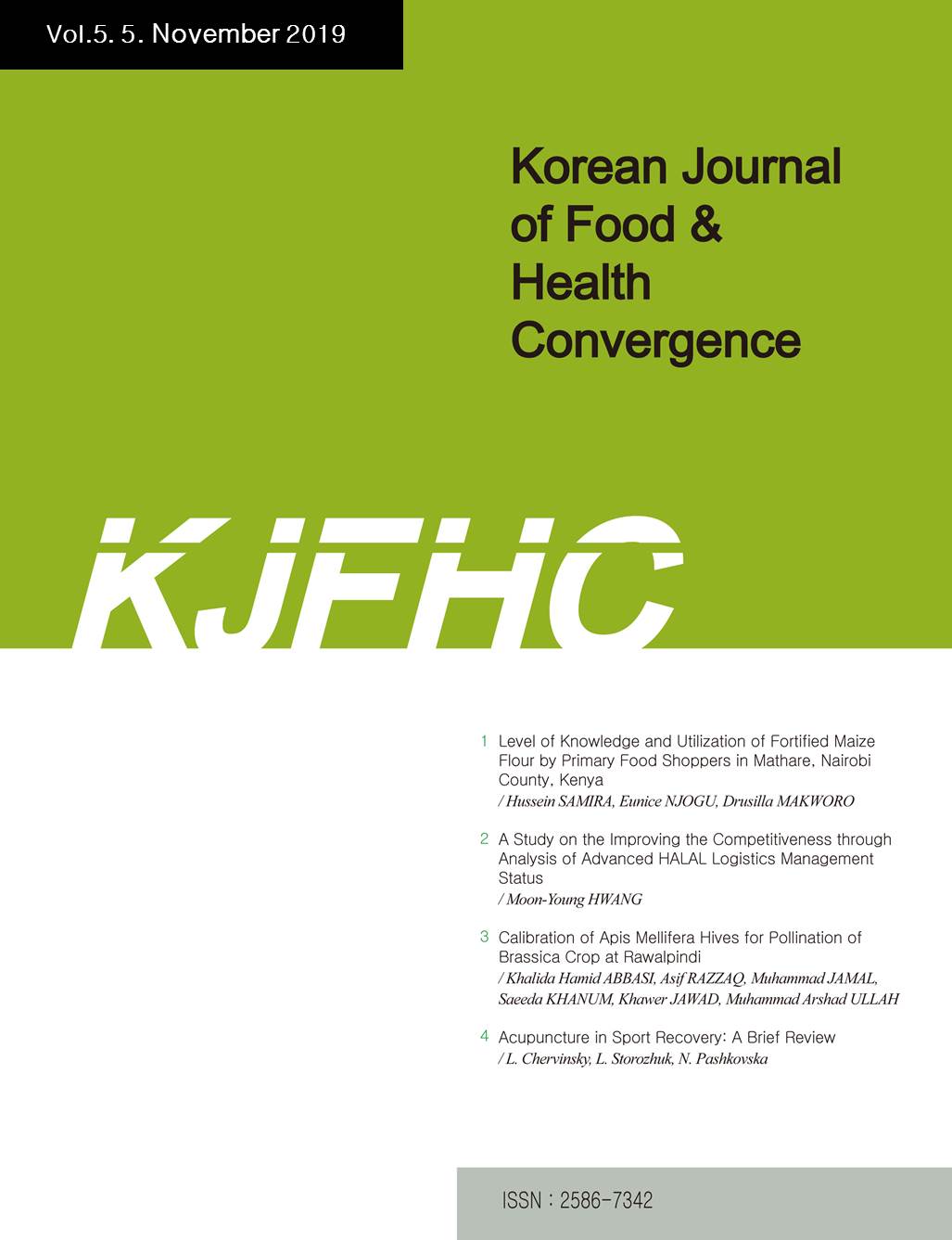 E-ISSN : 2586-7342
E-ISSN : 2586-7342
Vol.8 No.1
Abstract
This study classified subjects aged 30 to 64 into normal group, impaired fasting glucose group, and diabetes mellitus patient group based on data from the 6th period of the National Health and Nutrition Examination Survey (2013-2015). Skipping breakfast, lack of physical activity, inadequate sleep time, inadequate weight, excessive drinking, and current smoking are classified as a low health risk group when three or less items are present, and a high health risk group when three or more items are included. By classification, each item included in the physical measurement and biochemical analysis factors and health risk behavior factors was comparatively analyzed. As a result, in the normal group, impaired fasting glucose group, and diabetes group, the average age was higher in the group with high health risk factors than the group with low risk factors, and the male ratio was higher. Body mass index, waist circumference, blood pressure, triglyceride showed a significantly higher result. In the normal group, the fasting blood glucose level and total cholesterol level were also higher in group 2. Therefore, it is thought that it is necessary to control health risk behaviors through lifestyle changes in the normal group, fasting glucose disorder group, and diabetes group.
Abstract
Recently, the use of serving robots has been increasing due to the increase in preference for non-face-to-face services and the rise in the minimum wage due to the coronavirus. When analyzing previous studies related to serving robots, it was confirmed that most of the studies on the functions and technologies of serving robots were conducted. Therefore, this study analyzed the factors affecting the attitude and customer satisfaction of restaurant consumers toward serving robots by adding performance expectations, effort expectations, and speed factors among the UTAUT2 models. The survey period was conducted from July 28, 2021 to September 9, 2021, and 306 out of a total of 310 surveys were used for analysis, excluding 4 unfaithful surveys. For the analysis, exploratory factor analysis, reliability analysis, confirmatory factor analysis, and hypothesis test were performed using SPSS 20.0 and AMOS 20.0, and the research results are as follows. First, it was found that performance expectation, effort expectation, and speed had a significant positive (+) effect on attitudes. Second, it was found that attitude had a significant positive (+) effect on customer satisfaction. This study researched customer selection attributes of robot service restaurants using the UTAUT2 model, and also provided academic and practical implications.
Abstract
Paralytic ileus is a metabolic state in which the intestines fail to transmit peristalsis due to failure of the neuromuscular mechanism in the small intestines and colon. It is a major cause of morbidity in hospitalized patients especially during late presentations and points of mismanagement. The causes include infections, electrolyte imbalance (hypokalemia, hyponatremia), surgeries and medications. When the exact cause of the disease condition is identified and corrected, paralytic ileus is usually resolved. This case report is that of a 16 year old female who was admitted and managed as a case of paralytic ileus. The patient presented with symptoms of fever, abdominal pain, abdominal distension, vomiting and inability to pass stool or flatus. There was associated body weakness, reduced urine output and weight loss. She was properly examined clinically and sent for various investigations. Investigations such plain abdominal X-Ray, serum electrolyte estimation, chest X-Ray and full blood count were carried out. The results of the investigations done were in keeping with the diagnosis of paralytic ileus, electrolyte imbalance and ongoing sepsis. She was subsequently managed through nil per oral, adequate fluid rehydration, antibiotics and correction of electrolyte imbalance. Following stable clinical state and investigation results, she was discharged and advised on follow-up.
Abstract
This study proposed a multiple regression equation for predicting VO2max of elderly men and women using functional performance variables required to conduct daily activities. The subjects of this study were 58 elderly men (72.4±5.9 yrs) and 117 elderly women (73.4±4.5 yrs) aged 65-90 who belong to the senior welfare center. The maximal graded exercise test using a cycle ergometer and functional performance representing muscle strength, endurance, static and dynamic flexibility, mobility, and agility were measured. For statistical processing, multiple regression analysis was performed, and the statistical significance level was α = .05. As a result, the VO2max estimation formula for the elderly was 0.419 (standing up and sitting down a chair) + 0.199 (leg endurance against wall) + 5.383, and R2=0.406. In addition, the VO2max estimation formula for elderly women is - 0.737 (standing up from a supine position) - 0.144 (waking around two cones in a figure 8) - 0.135 (%body fat) + 0.042 (one leg balance with eyes open) + 29.395, R2=0.367 was calculated. The conclusion is that if the maximal graded exercise test is not available, it is considered that VO2max of the elderly can be predicted properly by using the estimation formula calculated based on the functional performance variable.
